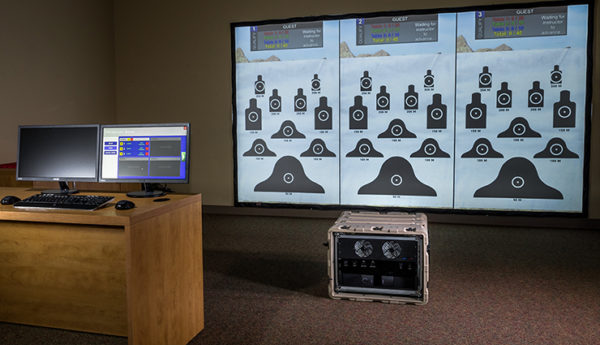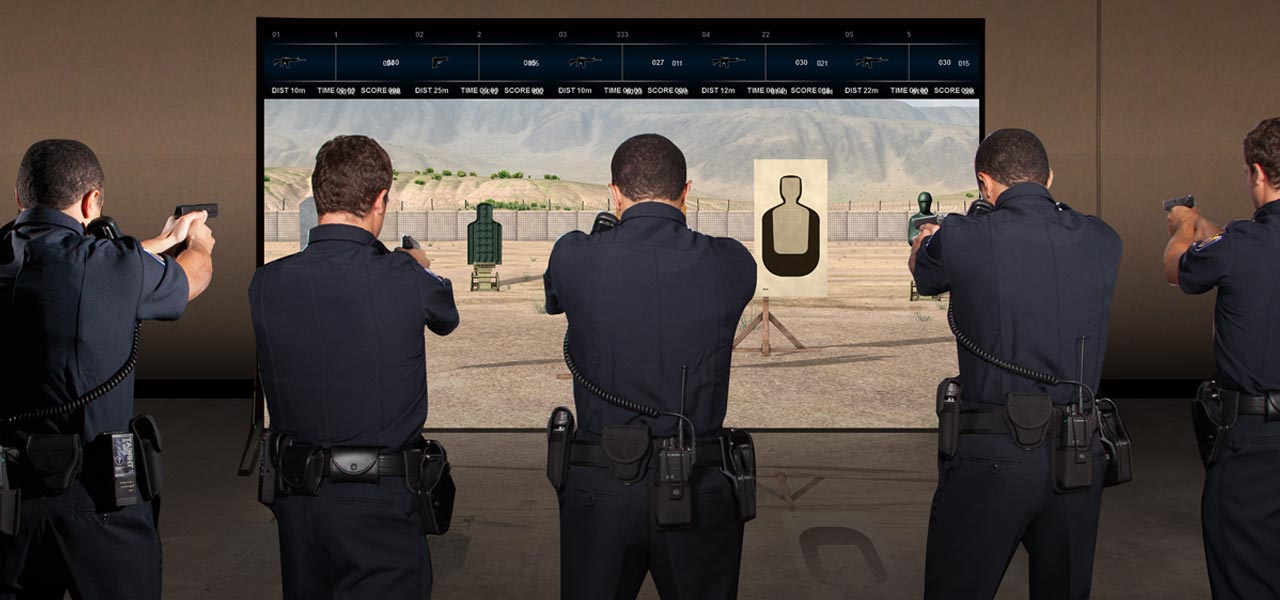The Rise of Virtual Firearms: Exploring the World of Online Gun Simulators
Related Articles: The Rise of Virtual Firearms: Exploring the World of Online Gun Simulators
Introduction
With enthusiasm, let’s navigate through the intriguing topic related to The Rise of Virtual Firearms: Exploring the World of Online Gun Simulators. Let’s weave interesting information and offer fresh perspectives to the readers.
Table of Content
The Rise of Virtual Firearms: Exploring the World of Online Gun Simulators

The realm of online gaming has witnessed a surge in popularity of simulations, offering virtual experiences that range from building empires to piloting spacecraft. Among these, a particular niche has gained traction: gun simulators. These digital platforms, designed to mimic the mechanics and intricacies of firearms, present a unique blend of entertainment, education, and, for some, a controversial element of realism.
This exploration delves into the world of online gun simulators, examining their features, motivations behind their creation, and the diverse perspectives surrounding their existence.
Understanding the Mechanics: How Gun Simulators Work
Online gun simulators, at their core, are software programs that replicate the operation of firearms in a virtual environment. This replication can range from rudimentary representations to highly sophisticated models that incorporate intricate details of ballistics, recoil, and weapon handling.
Key Features of Online Gun Simulators:
- Realistic Weaponry: Simulators often feature a vast library of firearms, from classic pistols and rifles to specialized weapons like shotguns and machine guns. They may incorporate detailed models of real-world firearms, including their unique firing mechanisms, sights, and attachments.
- Virtual Ranges and Scenarios: Users can engage in target practice within virtual shooting ranges, testing their accuracy and proficiency with various weapons. Some simulators offer more immersive experiences, allowing players to participate in simulated scenarios, such as hostage situations or tactical combat.
- Customization and Upgrades: Many simulators allow players to personalize their virtual arsenals, adding scopes, suppressors, and other modifications to enhance performance. Some even offer the ability to customize the appearance of weapons, adding a layer of personal expression.
- Multiplayer Capabilities: Some platforms facilitate multiplayer experiences, enabling players to compete against or collaborate with others in virtual shooting competitions or cooperative scenarios.
- Educational Value: While primarily entertainment-focused, some simulators are designed to educate users about firearms safety, handling, and the principles of marksmanship.
Motivations Behind the Creation of Gun Simulators:
The creation of online gun simulators is driven by a multifaceted set of motivations:
- Entertainment and Escapism: For many users, gun simulators offer a form of entertainment, allowing them to engage in virtual shooting experiences without the real-world consequences.
- Training and Skill Development: Simulators provide a safe and controlled environment for practicing shooting skills, particularly for individuals interested in competitive shooting, law enforcement, or military training.
- Educational Purposes: Some simulators are designed to provide educational insights into firearms safety, operation, and responsible handling. They can be used as a tool for teaching firearm safety principles to young people or individuals seeking to learn about firearms.
- Technological Advancement: The development of increasingly sophisticated gaming technology has made it possible to create highly realistic and immersive gun simulator experiences.
The Controversial Landscape: Perspectives on Gun Simulators
The existence of online gun simulators has sparked a debate, with diverse perspectives emerging from various stakeholders:
- Proponents: Supporters argue that simulators offer a safe and controlled environment for individuals to explore firearms, practice shooting skills, and gain knowledge about weapon operation and safety. They emphasize the potential educational value and the entertainment aspect, particularly for those who may not have access to real firearms.
- Opponents: Critics express concern that simulators can desensitize users to violence and normalize the use of firearms. They argue that the realistic depiction of weaponry can contribute to a culture of violence and potentially lead to real-world harm. Some also raise concerns about the potential for simulators to be used for harmful purposes, such as training for criminal activities.
Addressing the Concerns: Promoting Responsible Use
Navigating the complex ethical landscape surrounding gun simulators requires a balanced approach that acknowledges both the potential benefits and risks.
- Emphasis on Safety and Education: Simulators should be designed and utilized with a strong focus on safety and education. Developers can incorporate features that emphasize responsible firearm handling, provide accurate information about firearms, and promote safe practices.
- Age Restrictions and Parental Guidance: Implementing age restrictions and encouraging parental involvement can mitigate concerns about desensitization and inappropriate exposure to violence.
- Transparency and Ethical Considerations: Developers and platform providers should be transparent about the content and purpose of their simulators, clearly outlining the intended audience and potential risks.
- Community Engagement and Dialogue: Fostering open dialogue and collaboration between developers, educators, and community members can help address concerns and develop responsible practices.
FAQs: Addressing Common Questions about Gun Simulators
1. Are Gun Simulators Realistic?
The level of realism in gun simulators varies significantly depending on the platform. Some simulators prioritize entertainment and may not accurately reflect real-world ballistics or weapon handling. Others strive for high fidelity, incorporating detailed physics models and realistic weapon mechanics.
2. Are Gun Simulators Safe?
Gun simulators themselves are safe as they involve virtual interactions. However, it’s crucial to ensure responsible use, particularly by minors, and to avoid any potential for desensitization or harmful behavior.
3. Can Gun Simulators Be Used for Training?
Yes, some simulators are designed for training purposes, particularly for law enforcement, military personnel, and competitive shooters. These simulators often incorporate realistic scenarios and feedback mechanisms to enhance training effectiveness.
4. Do Gun Simulators Contribute to Violence?
The relationship between gun simulators and real-world violence is complex and debated. While there is no direct causal link, some argue that exposure to virtual violence can desensitize individuals and potentially contribute to a culture of violence.
5. What Are the Ethical Considerations Surrounding Gun Simulators?
Ethical considerations include the potential for desensitization, the risk of glorifying violence, and the potential for misuse. Developers and users should be mindful of these concerns and promote responsible use.
Tips for Responsible Use of Gun Simulators:
- Understand the Purpose: Be aware of the intended purpose of the simulator and its potential for both entertainment and education.
- Use Age Restrictions: Ensure that simulators are used by appropriate age groups, adhering to any age restrictions set by the platform.
- Promote Safe Practices: Encourage responsible handling of virtual firearms and emphasize the importance of firearm safety in real-world scenarios.
- Engage in Critical Thinking: Encourage users to reflect on the content of the simulator and its potential impact on their perceptions of violence and firearms.
- Seek Educational Resources: Utilize simulators as a tool for learning about firearms safety, responsible handling, and the history and culture surrounding firearms.
Conclusion: Navigating the Future of Gun Simulators
Online gun simulators represent a fascinating intersection of technology, entertainment, and social responsibility. As these platforms continue to evolve, it is crucial to approach them with a balanced perspective, recognizing both their potential for entertainment, education, and skill development, as well as the need for responsible use and ethical considerations.
The future of gun simulators lies in finding a middle ground, where the potential benefits of these platforms can be realized while mitigating the risks associated with their use. This will require ongoing dialogue, collaboration, and a commitment to responsible development and utilization.








Closure
Thus, we hope this article has provided valuable insights into The Rise of Virtual Firearms: Exploring the World of Online Gun Simulators. We appreciate your attention to our article. See you in our next article!